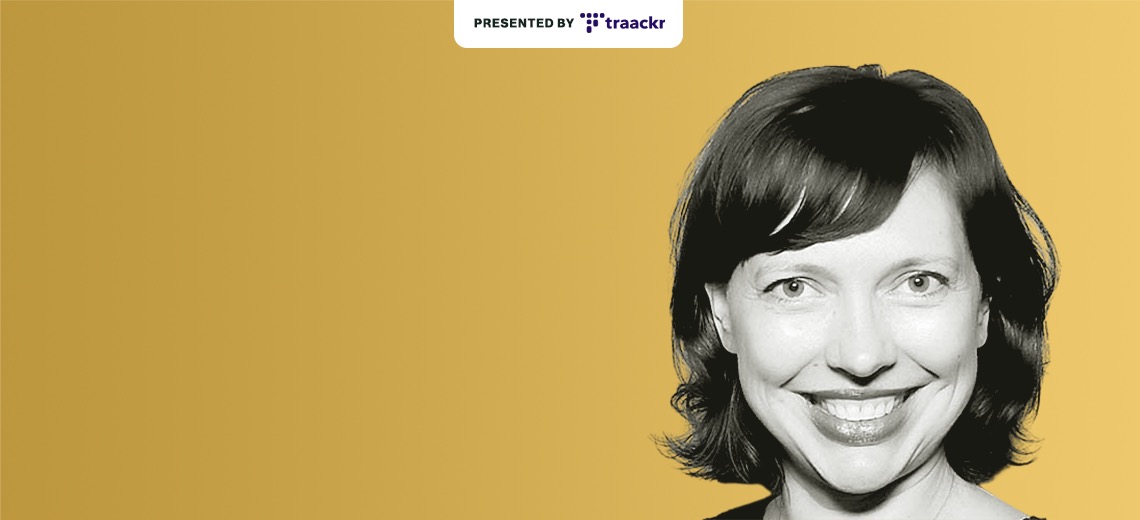Subscribe: Apple Podcasts | Stitcher | Google | Spotify
When Carolyn Bojanowski, svp and gm of e-commerce at Sephora, joined the retailer team in 2005, it was an opportunity to pay homage to her childhood as the daughter of a candy buyer. In her mind, Sephora was the “candy store of beauty.”
“Sephora has always been committed to the digital experience,” said Bojanowski on the latest Glossy Beauty Podcast.
And that e-commerce experience had to go into overdrive during the pandemic. Not only did Bojanowski spearhead the acceleration of Sephora’s in-store pick-up, but she facilitated an unlikely ally in Instacart. She also launched Sephora’s same-day pick-up service to expand its customer reach. “If you can give someone back time, that is another way to think about having a luxury experience,” she said.
During Covid-19, Bojanowski was also tasked with translating the in-store customer service experience to online, where the practicality of in-store product trial did not exist. In addition to its thorough product pages, shade finders, quizzes and UGC, Sephora launched on Sephora.com its live beauty help, which enables customers to chat with Sephora’s in-house beauty advisors from the comfort of their homes, said Bojanowski. This has also created a whole new retail role for the company.
Below are additional highlights from the conversation, which have been lightly edited for clarity.
Giving back time
“For our clients, time is the scarcest resource. When everybody pivoted to this world of convenience and things like curbside [pick-up] and partnerships with Instacart, we thought about it as a way to continue Sephora’s luxury brand positioning. This is a time-saver. This is making your life easier. And we’re doing it in a way that continues our brand positioning and experience. For example, with buy-online, pick-up in-store, you can go into a store and interact with a beauty advisor who can help augment whatever you’ve chosen or [answer any] questions. What I would say with same-day [delivery], which is an initiative that we launched in October, is that it removes any barrier to, ‘I don’t need to think twice about this.’ It enables [the] majority of our clients to hit Sephora.com and get their beauty [order] in around two hours. And that’s the ultimate luxury — convenience.”
Creating retail experiences at home
“The concept of home chat started when stores were locked down. And we were saying, ‘How can we utilize this great talent and knowledge that we have with our beauty advisors? Let’s get them set up from their homes to connect with clients who are hitting up Sephora.com.’ We thought it would be 20-minute full-face consultations and that they might even want to do video. But what we found — and it makes a lot of sense — is [that] everybody’s a good texter, and that’s essentially what chat is. The thing that we’re doing in our everyday life is what clients want from us. It’s, ‘Hey, I’m looking at this product page for this new moisturizer. Do you think it’ll work on my oily skin type? Or is it too much moisture for me?’ Those quick hits were what our clients wanted. I got a chance to play a beauty advisor for a day and do the chats, and it was fast and furious and fun. It’s been super fun and a great way for our beauty advisors to augment their overall support experience: They get to work in our stores [and] get that deep product knowledge, but then they also have this flexibility to have some hours to service clients differently.”
Evolving with the customer
“As a brand, Sephora has grown up a bit with the same mobile journey. I remember when I had to approve something for my team [and thought], ‘OK, we all need phones because we have to stop queuing the site on a desktop.’ It’s phone-first, always. And then there’s a question, too, about whether the app is dead. We do not see that. Our clients love the app, and we continue to gain new clients and downloads every day with our app. We’re always adjusting [according] to trends like [infinite] scrolling. As everyone got used to scrolling on Instagram, we positioned our content on our apps and mobile web differently to mimic that scrolling action. We always used to be careful about [asking], ‘OK, is it too much content? And what’s below the fold and above the fold?’ We found that clients have gotten used to [doing] the thumb scroll forever. If they’re interested and they’re engaged, and we’re delivering relevant content, then that’s the right place to be… We continue to evolve with our clients and give them the best way to shop.”




